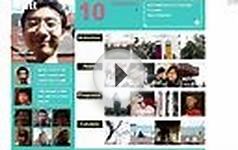Review the differences between process- and product-focused art to help you get started.
Characteristics of process-focused art experiences
• There are no step-by-step instructions
• There is no sample for children to follow
• There is no right or wrong way to explore and create
• The art is focused on the experience and on exploration of techniques, tools, and materials
• The art is unique and original
• The experience is relaxing or calming
• The art is entirely the children’s own
• The art experience is a child’s choice
• Ideas are not readily available online
What children might say
“Look what I made!” “I’m going to do another!”
“Can I have more time?”
Characteristics of product-focused art experiences
• Children have instructions to follow
• The teacher created a sample for children to copy
• There’s a right and a wrong way to proceed
• There’s a finished product in mind
• The children’s finished art all looks the same
• The children experience frustration
• The teacher might “fix mistakes”
• The whole class took part in an art project at the same time
• Patterns and examples are readily available online
What children might say
“Can I be done now?” “Is this right?” “I can’t do it.”
“Mine doesn’t look like yours.”
Provide open-ended, creative art experiences by offering activities such as
• Easel painting with a variety of paints and paintbrushes (with no directions)
• Watercolor painting
• Exploring and creating with clay
• Finger painting
• Painting with unusual tools like toothbrushes, paint rollers, potato mashers
• Printing and stamping (stamps purchased or made with sponges)
• Creating spin art using a record player and paint, squirt bottles, paintbrushes, or markers
• Stringing beads independently and creatively
• Weaving cloth, yarn, or paper
• Drawing with pencils, art pens, various sizes of markers, or crayons
• Using homemade doughs
• Making collages using tissue paper, various sizes of paper, glue, paste, glue sticks, scissors, and recycled materials







